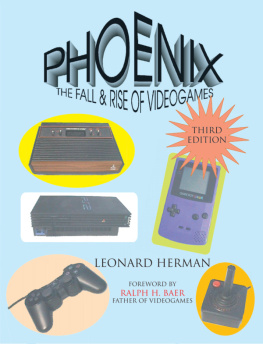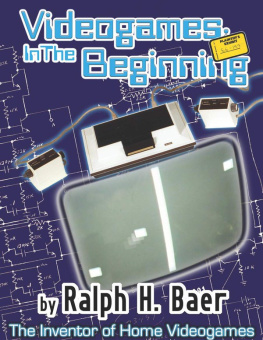Ian Bogos - How to Do Things with Videogames
Here you can read online Ian Bogos - How to Do Things with Videogames full text of the book (entire story) in english for free. Download pdf and epub, get meaning, cover and reviews about this ebook. year: 2011, publisher: University of Minnesota Press, genre: Romance novel. Description of the work, (preface) as well as reviews are available. Best literature library LitArk.com created for fans of good reading and offers a wide selection of genres:
Romance novel
Science fiction
Adventure
Detective
Science
History
Home and family
Prose
Art
Politics
Computer
Non-fiction
Religion
Business
Children
Humor
Choose a favorite category and find really read worthwhile books. Enjoy immersion in the world of imagination, feel the emotions of the characters or learn something new for yourself, make an fascinating discovery.
- Book:How to Do Things with Videogames
- Author:
- Publisher:University of Minnesota Press
- Genre:
- Year:2011
- Rating:5 / 5
- Favourites:Add to favourites
- Your mark:
- 100
- 1
- 2
- 3
- 4
- 5
How to Do Things with Videogames: summary, description and annotation
We offer to read an annotation, description, summary or preface (depends on what the author of the book "How to Do Things with Videogames" wrote himself). If you haven't found the necessary information about the book — write in the comments, we will try to find it.
How to Do Things with Videogames — read online for free the complete book (whole text) full work
Below is the text of the book, divided by pages. System saving the place of the last page read, allows you to conveniently read the book "How to Do Things with Videogames" online for free, without having to search again every time where you left off. Put a bookmark, and you can go to the page where you finished reading at any time.
Font size:
Interval:
Bookmark:

PRAISE FOR IAN BOGOST
Praise forNewsgames: Journalism at Play
A new generation of news junkies has stopped reading the news and started playing it. Newsgames will be their rulebook.
Fred Turner, Stanford University
In their well-researched and intriguing book Newsgames: Journalism at Play, Ian Bogost, Simon Ferrari, and Bobby Schweizer examine the practice of fusing gaming with journalism. Its not a new idea: from before personal computers, with games like Diplomacy and Risk to early computer games, such as Balance of Power and Hidden Agenda, front-page reality and game-room fantasy have meshed well. Newsgames suggests this link should get stronger by purposefully employing gaming to convey news of the day. And it sets down a challenge not to gamers, but to journalists.
Michael Humphrey, Forbes.com Technology, Techno-tainers blog
Praise forPersuasive Games: The Expressive Power of Videogames
Analyzing the power of video games to mount arguments and influence players, Ian Bogost does again what he always does so very well: thoroughly rethink and shake up a traditional academic fieldrhetoricwhile lucidly building the foundations of a new onegame studies.
James Paul Gee, Mary Lou Fulton Presidential Professor
of Literacy Studies, Arizona State University
Videogames lack the cultural stature of legitimate art forms because they are widely perceived to be trivial and meaningless. But Ian Bogost makes a powerful argument that they are capable of informing and persuading as well as entertaining; in short, they possess the power of rhetoric. Backed by numerous examples from politics, advertising, and education, Persuasive Games is an important addition to the debate over what games are, do, and can be.
Ernest W. Adams, game design consultant and educator
Bogost creates and writes about serious games, seemingly simple diversions that deliver educational, political, and advertising content alongside entertainment. In Persuasive Games, he offers an academic but accessible introduction to their potential, and it is very meaty reading for anybody interested in where the interactive arts meet real-world topics.
Scott Colbourne, The Globe and Mail
Praise forUnit Operations: An Approach to Videogame Criticism
Bogost challenges humanists and technologists to pay attention to one another, something they desperately need to do as computation accelerates us into the red zones of widespread virtual reality. This book gives us what we need to meet that challenge: a general theory for understanding creativity under computation, one that will apply increasingly to all creativity in the future.
Edward Castronova, Indiana University, and author of
Synthetic Worlds: The Business and Culture of Online Games
Unit Operations is a major milestone on the path to establishing a framework for analyzing videogames as important cultural artifacts of our time. Proposing a comparative approach to videogame criticism that is equally relevant for humanists and technologists, Ian Bogost weaves philosophy, psychoanalysis, literature, film, media theory, informatics, software, and videogames into a narrative that reveals how these seemingly disparate fields relate to and inform each other. Unit operationsdiscrete, programmatic units of meaningare the conceptual tool that unpacks complex relationships between different worlds: criticism and computation, genetics and complex adaptive systems, and narrative spaces from Casablanca and Half-Life to Ulysses and Grand Theft Auto.
Christiane Paul, adjunct curator of new media arts,
Whitney Museum of American Art
Praise forRacing the Beam: The Atari Video Computer System:
Racing the Beam doesnt spare the technical details but is always accessible and compelling. Downright thrilling at times, in facta sort of The Right Stuff of video game development.
Darren Zenko, thestar.com (Toronto Star)
Racing the Beam presents not just the technical challenges but the financial, bureaucratic, and scheduling considerations that harried the Atari 2600 VCS programmers. Modern game designers should read this book for the same reason that modern generals study the military campaigns of Alexander and Caesar: the technology is completely different but the principles are the same.
Chris Crawford, former head of Ataris Games Research Group
and cofounder of Storytron
Ian Bogost and Nick Montfort raise the bar for anyone wishing to talk meaningfully about computer culture. Not only must we interpret these machines, we first must know how they workand yes, sometimes this means knowing assembly code. From chip to controller, the authors lead us with ease through the Atari 2600 Video Computer System, one of the most emblematic devices in recent mass culture.
Alexander Galloway, New York University, and author of Protocol: How Control
Exists after Decentralization and Gaming: Essays on Algorithmic Culture
William Morris famously opined, You cant have art without resistance in the materials. In Racing the Beam, Nick Montfort and Ian Bogost authoritatively update that dictum for the computer age. This technically rigorous but also (finally) deeply humanistic book is not just a history of a particular platform but an excavation of how its unique affordances and constraints shaped its capacity for the creative.
Matthew G. Kirschenbaum, University of Maryland, and author of
Mechanisms: New Media and the Forensic Imagination
< HOW TO DO THINGS WITH VIDEOGAMES >

Ian Bogost
Electronic Mediations 38

Copyright 2011 by Ian Bogost
All rights reserved. No part of this publication may be reproduced, stored in a retrieval system, or transmitted, in any form or by any means, electronic, mechanical, photocopying, recording, or otherwise, without the prior written permission of the publisher.
Published by the University of Minnesota Press
111 Third Avenue So uth, Suite 290
Minneapolis, MN 55401-2520
http://www.upress.umn.edu
Library of Congress Cataloging-in-Publication Data
Bogost, Ian.
How to do things with videogames / Ian Bogost.
p. cm. (Electronic mediations; v. 38)
Includes bibliographical references.
ISBN 978-0-8166-7646-0 (hc : alk. paper)
ISBN 978-0-8166-7647-7 (pb : alk. paper)
ISBN 978-1-4529-3248-4 (ebook)
1. V ideo gamesSocial aspects. I. Title.
GV1469. 34.S52B63 2011
793.932dc23
2011023625
Printed in the United States of America on acid-free paper
The University of Minnesota is an equal-opportunity educator and employer.
18 17 16 15 14 13 12 11 10 9 8 7 6 5 4 3 2 1

These days, you cant open a website or enter a bookstore without finding yet another impassioned take on emerging technologies promise to change our lives for the betteror for the worse. For every paean to Wikipedia or blogging or mobile computing, theres an equally vehement condemnation.
Font size:
Interval:
Bookmark:
Similar books «How to Do Things with Videogames»
Look at similar books to How to Do Things with Videogames. We have selected literature similar in name and meaning in the hope of providing readers with more options to find new, interesting, not yet read works.
Discussion, reviews of the book How to Do Things with Videogames and just readers' own opinions. Leave your comments, write what you think about the work, its meaning or the main characters. Specify what exactly you liked and what you didn't like, and why you think so.

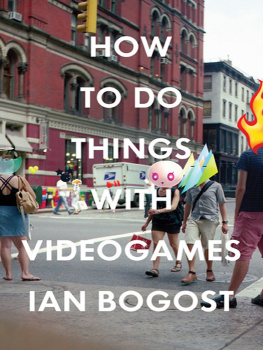

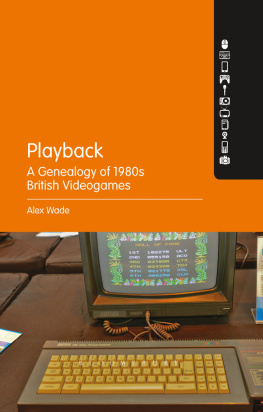
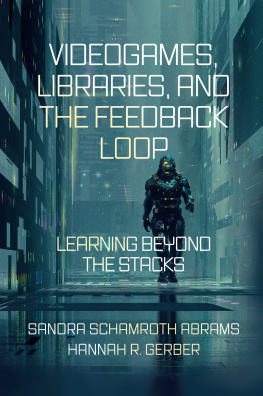
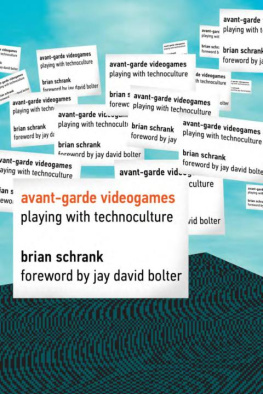


![Chris Bateman [Chris Bateman] - Beyond Game Design: Nine Steps Toward Creating Better Videogames](/uploads/posts/book/119409/thumbs/chris-bateman-chris-bateman-beyond-game-design.jpg)
